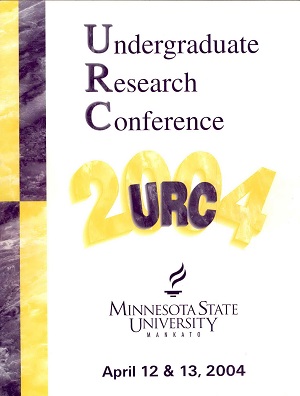Rotational Periods of Asteroids
Location
CSU 253/254/255
Start Date
12-4-2004 1:45 PM
End Date
12-4-2004 3:15 PM
Student's Major
Physics and Astronomy
Student's College
Science, Engineering and Technology
Mentor's Name
Steven Kipp
Mentor's Department
Physics and Astronomy
Mentor's College
Science, Engineering and Technology
Description
Asteroids are minor planets that orbit around the sun and are divided into different classes based on their orbit, size, composition and other physical characteristics. Knowing as many characteristics as possible about the roughly 100,000 known asteroids allow astronomers to speculate about how the solar system was formed and how it evolved. The rotational period of an asteroid is the amount of time it takes to rotate about its own axis and is useful for determining pole orientation, density and composition. By using the 0.5m telescope at Andreas Observatory six asteroids of unknown periods were observed and periods were obtained and submitted to the Collaborative Asteroid Lightcurve Link where astronomers from around the world compile their data for others to use. To determine the period, each asteroid was observed over the course of at least one night and the changing light reflected off the asteroid from the sun as it rotated was compared to distant stars that fundamentally stay constant in brightness. The determined periods in hours are: 1165 Imprinetta 7.9374±0.0016, 1299 Mertona 4.977±0.003, 1645 Waterfield 4.861±0.002, 1833 Shmakova 3.934±0.003, 2313 Aruna 8.900±0.003 and 13856 1999XZ105 4,4475±0.0055
Rotational Periods of Asteroids
CSU 253/254/255
Asteroids are minor planets that orbit around the sun and are divided into different classes based on their orbit, size, composition and other physical characteristics. Knowing as many characteristics as possible about the roughly 100,000 known asteroids allow astronomers to speculate about how the solar system was formed and how it evolved. The rotational period of an asteroid is the amount of time it takes to rotate about its own axis and is useful for determining pole orientation, density and composition. By using the 0.5m telescope at Andreas Observatory six asteroids of unknown periods were observed and periods were obtained and submitted to the Collaborative Asteroid Lightcurve Link where astronomers from around the world compile their data for others to use. To determine the period, each asteroid was observed over the course of at least one night and the changing light reflected off the asteroid from the sun as it rotated was compared to distant stars that fundamentally stay constant in brightness. The determined periods in hours are: 1165 Imprinetta 7.9374±0.0016, 1299 Mertona 4.977±0.003, 1645 Waterfield 4.861±0.002, 1833 Shmakova 3.934±0.003, 2313 Aruna 8.900±0.003 and 13856 1999XZ105 4,4475±0.0055



